How to tell if your puppy is happy? One sure bet for most people who adopt a new puppy is that the pet will be content and healthy. Just like humans, dogs express their emotions through behavior and physical actions. Therefore, finding out whether or not your puppy is happy is equally important, as it helps you better understand its needs and create a bond with it.
How to Tell if Your Puppy is Happy
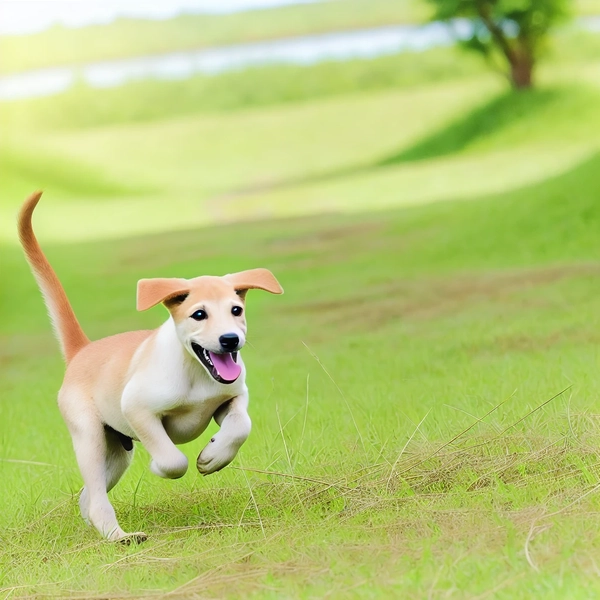
Here are half the surest ways to determine whether a puppy is still a happy dog or a puppy.
Signs of a Happy Puppy
- A wagging tail
The first and the most easily understood hundred-one percent sign that a pet is happy is tail wagging. If you see your pet or a neighbor’s dog moving its tail quickly, believe it is very happy. But beware! Not all tail wagging is of happiness. Slow waving at a low level shows worriedness or nervousness, while fast waving at a higher level symbolizes joy or excitement.
- Playfulness
Puppies are born curious and full of energy. For instance, if the puppy is ready to catch a ball, play with a rope, or play hide-and-seek around the house, that’s good. This social play enables the puppies to practice their problem-solving and physical skills while burning off energy. A puppy that plays is a confident and happy puppy.
- Healthy Appetite
They enjoy every meal and reversals and may even try to snatch one of your food! However, if your puppy does not eat as much as before or becomes uninterested in food, it might signal stress or illness. In this case, keep an eye on their eating habits.
- Using a relaxed body position.
Watch the way the puppy is positioned. A satisfied dog, for instance, may look somewhat relaxed. It may fall on its back or lay on its side and stretch completely.
If the dog is on the back with the legs up in the air, it is a sign that the dog feels very comfortable in the particular environment.
On the other hand, a dog with a stiff body, a tucked tail, or ears pulled back aside may suggest that it is scared. In fact, it may be agitated.
Your Puppy’s Emotional Expression
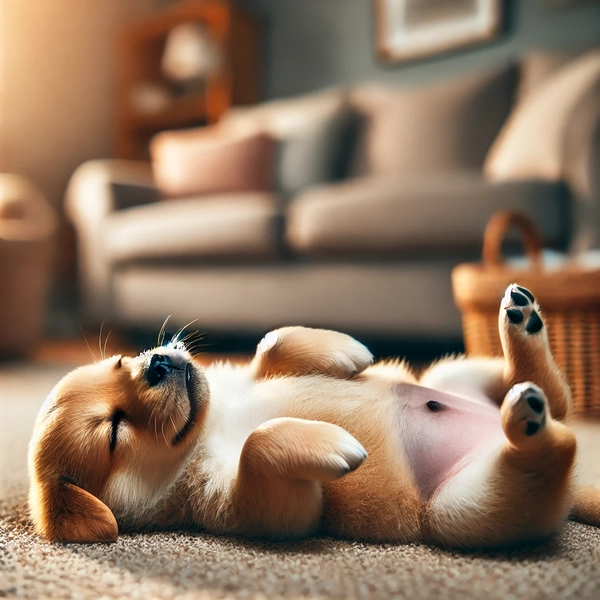
Like humans, puppies express their feelings in their way. The following are some of the signs to identify the emotions of your puppy:
- Eye Contact
A contented puppy will gaze back at you without any problems. Normally, their eyes are soft and relaxed, and they blink, which simply signifies feeling safe. When a puppy turns his head and does not look at you when you speak, it means he is upset or submissive.
- Facial Expressions
Dogs also have facial expressions, like a happy puppy’s mouth, which would be shaped like a smile or slightly open, with its tongue showing and its way of smiling. Sometimes, you may even see them carrying out a ‘play bow,’ a renegade of them – one front leg stuck out and the other off the ground. That is how a puppy says, ‘Let us go and have fun!’
- Jumping And Bouncing
As much as it makes you feel bad or irritated to see a puppy jumping all over you, it is normal, and most of the time, the indication is exhilaration and happiness on its side. Puppies regard it as something of a necessity to jump and bounce whenever they are energetic and very eager to see you. Nevertheless, teaching them to act happy rather than inappropriate behavior is possible.
- Sleeping Healthy Sleep Patterns
Young puppies typically need a lot of rest during the day, with some even going as far as sleeping almost eighteen hours out of the twenty-four. Fortunately, you can tell a lot from a sleeping puppy, usually a purring one.
Sleeping correctly and deeply after feeding or playing alerts that the pet feels warm and comfortable. A puppy that is unable to fall asleep or has a lot of difficulty doing so could be suffering from anxiety or even sickness.
Healthy Puppy, Happy Puppy
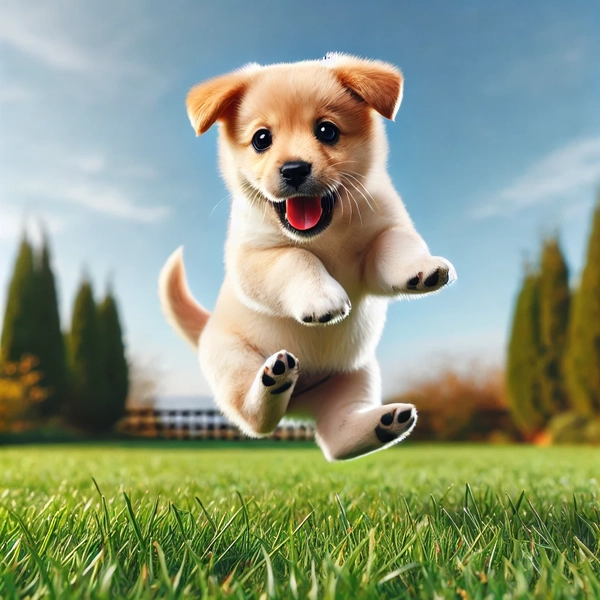
puppies that are always happy are usually healthier. Only by taking good care of the puppies’ health does their happiness come in. The preparation for this has been set out for you on the next page. Some of the aspects will include:
- Regular vet checkups
It is no secret why every prudent pet owner should see to it that their newly acquired canine best friend is taken to the vet’s clinic at regular intervals. The vet is responsible for checking whether a dog is growing well and for checking vaccination statuses. They also confirm that dogs are not sick. Dogs do not complain about their health to anyone, so it is nice for dogs to frequently visit the various veterinary offices.
- Appropriate nutrition
Just like humans, youngsters need a balanced diet. Always ensure that you give the puppy food in a quantity not more than the recommended amount according to its age and size. Drinking water should always be within the puppy’s close proximity when it is required. Also, inquire with the vet on the type of feed that suits the puppy’s breed.
- Regular exercise
Young puppies usually have a lot of energy, so rather than detract from it, it is advisable to channel it into physical activities. Toys, games, and challenges should be part of the everyday routine. Observations show that a puppy with regular exercise is less likely to have bad habits of biting and barking.
- Dressing up spotlight
Puppies also need regular care for short-haired puppies. Grooming will make the puppy comfortable and make it trust the owner better. Furthermore, the restoration and enhancement of a clean pup can invariably be pleasing compared to a shabby one.
Common Mistakes When Reading Puppy’s Behavior
There are a few Common Mistakes:
| Behavior | What You Might Think | What It Really Means |
| Tail wagging | They’re always happy | Could mean anxiety if tail is tucked |
| Barking | They want attention | Might be feeling stressed or scared |
| Sleeping a lot | They’re bored | Puppies need a lot of sleep to grow |
| Chewing everything | They’re misbehaving | It’s natural for puppies to chew as they explore the world |
Understanding Puppy Emotions
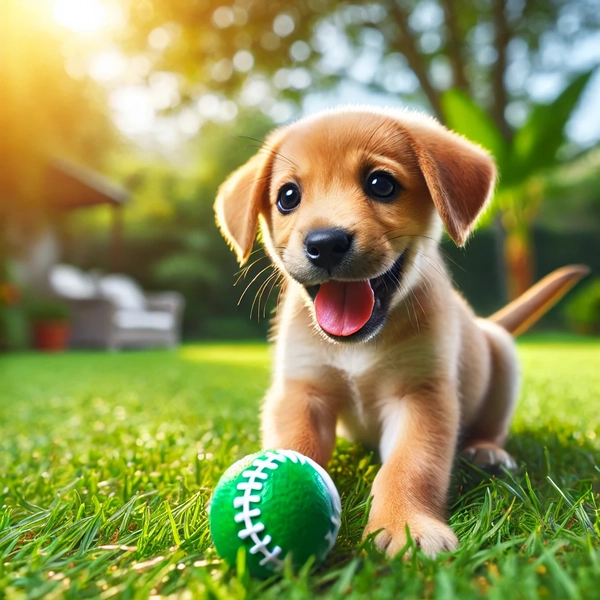
It’s important to note that puppies can equally express a range of inner feelings just like people. Even though predominately joy is the target, there are still times when a puppy feels hostile or afraid. Here are a few things that can be done to help the little animal in such situations:
1. Comforting
For instance, your puppy will be afraid of you during a thunderstorm. Be calm and provide them with a quiet spot. Use a quiet voice while stroking it to ease its worries.
2. Doing the Same Thing Over and Over
Puppy loves routine. The plan is to have all the meals, exercises, and sleep-time sleep timeously daily. This is very important to these puppies as it ensures that everything is under control and reduces the amount of stress.
3. Encouraging Them to Alone
Time spent playing with puppies has excellent effects on their socialization. However, it is essential to help them gain some independence. Let them free in a playpen on their own. This promotes an increased sense of insignificance.
How to Increase Your Puppy’s Happiness
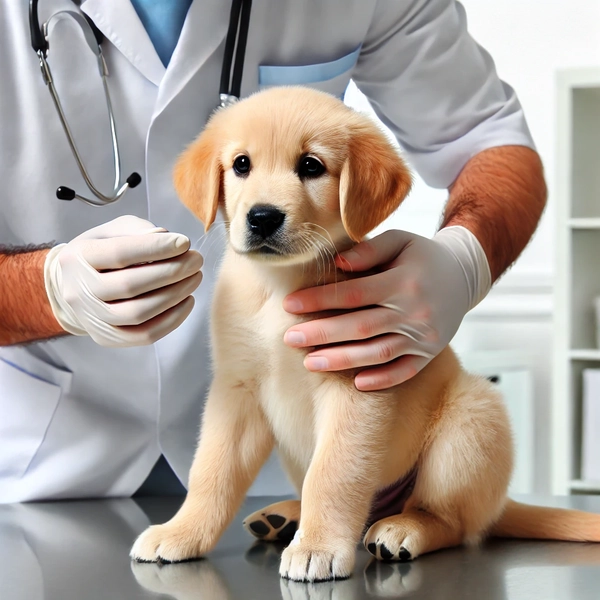
If you want to ensure your bubbly remains the same, follow the next helpful tips.
1. Relationship Development: Examine Your Puppy More
The first and foremost way to make your puppy happy is to look and add, look and talk about its images and pet forearm, and find fresh and interactive ideas.
2. Training
Dogs respond well to constructive reinforcement; these essential cognitive coats can improve their emotional wellness. Instructors are begging to release these challenges, helping them to let expectations, rendering the scented treats or other exciting factors in socialization
When socializing, a puppy also helps them build trust in strange situations. The more the puppy gets exposed to, the more they will be able to comprehend the world around them.
4. Safe Toys
Naturally, puppies have the urge to chew, but ensure there are harmless supplements offered. Omit break-apart and cause choking hazard toys.
FAQs
Q: What can I do to help my puppy feel secure?
A: Puppies are likely to feel secure when they have their own space free of disruption, a fixed daily routine, and some warm moments with the person taking care of them.
Q: Why does my puppy flip over onto its back whenever I play with it?
A: This behavior is perfectly natural for a puppy and one that boats off its comforting signals as the puppy wants to be left in peace and, therefore, trusts the person playing with it.
Q: My puppy likes to sleep a lot. Is this a normal behavior?
A: That is entirely normal! Puppies tend to sleep a lot, especially after running around or eating. That’s how they develop and recover.
Q: How will I know if my puppy is afraid?
A: Lashing their tail, stuttering eye contact, or fleeing situations signal puppies are experiencing fear or stress.
In conclusion, Your puppy’s well-being is directly correlated to their happiness. Happiness can be discerned from inattentiveness to external signs, expected behavior, and good health. Remember that a happy puppy is active and carefree and looks forward to spending time with you.
Make sure your puppy is well-fed, exercised, and cuddled at night, and you will also have a happy walking partner for your puppy. Remember to treasure these moments with your puppy because time passes quickly.
More honey and cute moments with my puppy – they grow up quickly!
Most importantly, pay attention to your puppy—they will tell you daily their mood. Your participation and affection are essential for their flourishing; therefore, be thankful for the relationship you forged with each other.